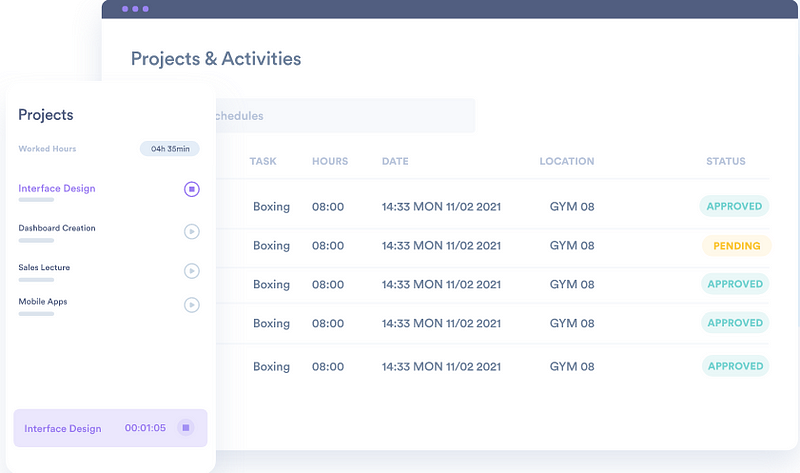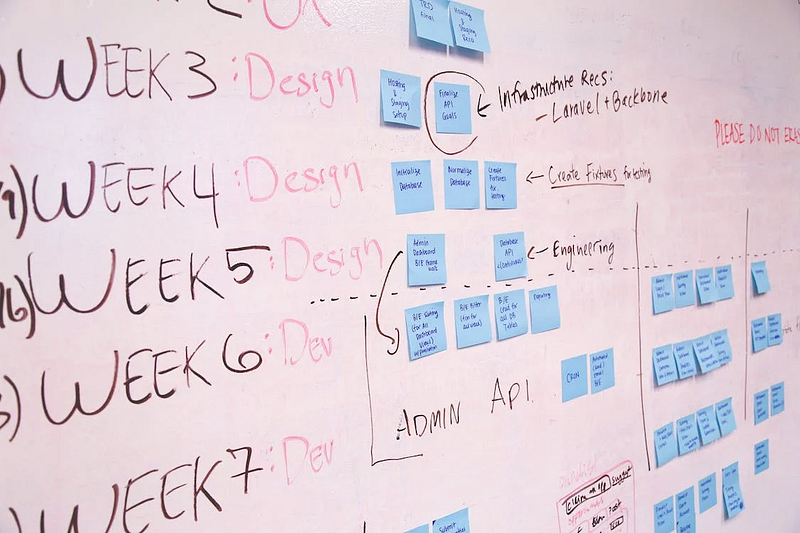Do you want to reduce project costs without sacrificing quality? Absolutely! Cost management is a key element of successful project management, but finding the right balance between cost and quality can be tricky. Fortunately, we have the solution.
Check out this article for 10 foolproof tips on how to reduce project costs while maintaining quality. From analyzing costs to negotiating prices and optimizing resources, these actionable strategies will help you get the most bang for your buck and give your PM skills a boost! It’s time to learn how to do more with less – let’s get started!
Throughout this article, we’ll discuss:
- Why Is It Beneficial to Reduce Project Cost?
- Why You Must Not Compromise Quality?
- How to Reduce Project Cost: 10 Proven Tips
- Wrap-up: Utilize a Project Management Software with Project Costing

Why Is It Beneficial to Reduce Project Cost?
Project cost reduction is a great way to optimize your budget, streamline processes, and increase the value of your project. Let’s look at the top reasons:
- Preventing budget overruns: Budget overruns can be extremely costly and disruptive to a project. By proactively reducing costs, you can save yourself the hassle of dealing with budget overruns.
- Optimizing resource allocation: Finding ways to reduce costs allows you to optimize your resource allocation and ensure that resources are being used efficiently on the project.
- Obtaining cost control and certainty: Reducing project costs creates a sense of control over the budget, which makes it easier for project managers to accurately predict how much money they will need for different activities or phases of the project. This helps them plan more accurately and stay within their budget limits.
- Improved ROI and profitability: Reducing costs on a project can also improve the return on investment (ROI) of the project. This is especially important for business-critical projects, where any increase in profits can make a significant difference to the bottom line.
- Reducing operational risks and delays: By reducing overall costs, you can avoid costly mistakes or schedule overruns that could cause delays in completing the project within its timeline.
Why You Must Not Compromise Quality?
One of the most significant dilemma project managers face is finding the right balance between cost and quality. It can be tempting to reduce costs by compromising on quality, but this approach rarely pays off in the long run. Here’s why:
- Compromising on quality can lead to further issues down the line: Cutting corners may seem like a good way to save money in the short term, but it often leads to bigger problems later on. Poorly executed work or shoddy materials could result in costly repairs or replacements that could have been avoided with better quality control from the start.
- Reduced reputation and customer satisfaction: Compromising on quality also has an impact outside of the project itself. If customers or stakeholders are not satisfied with the quality of your work, it could lead to a drop in reputation and customer satisfaction.
- Reduced trust: Quality is a key factor for building trust with clients and partners. By compromising on quality, you risk undermining any existing trust you have built up and damaging future relationships.
- Increased costs in the long run: In some cases, cutting corners can actually end up costing more money than if you had invested in higher-quality materials from the beginning. Poorly executed work may need to be redone later on, resulting in additional labor costs that could have been avoided by taking extra care in the first place.
For these reasons, it is essential to focus on reducing costs without compromising quality.
10 Proven Tips to Reduce Project Cost:
Now we’ll get into the nitty-gritty of how to reduce project cost without compromising quality. Here are 10 ways to reduce cost in a project:
1. Approaching Cost Reduction as An Ongoing Process
By taking a comprehensive look at your projects and processes, you can identify cost savings opportunities. From documenting existing procedures to tracking spending habits and reviewing vendor contracts, the data obtained is invaluable for making informed decisions about where to invest.
One-time cost reduction events are not only ineffective in addressing underlying issues but can lead to cutting corners and sacrificing quality. Additionally, there’s always the risk of overlooking potential cost savings opportunities.
Opting instead for ongoing process improvement with regular monitoring of expenses ensures that project costs are managed without compromising on quality.

2. Outsourcing
Outsourcing is an excellent way to reduce project costs without compromising quality. By outsourcing certain tasks, such as graphic design or software development, you can access specialized skills and expertise at a fraction of the cost of hiring full-time employees.
Additionally, outsourcing tasks can be beneficial for businesses with limited budgets and resources that don’t have access to in-house talent. But it’s important to make sure that any vendors you work with provide high-quality services and adhere to industry standards.
3. Looking for Cheaper Resources and Raw Materials
Researching cheaper resources and raw materials is a great way to reduce project costs without compromising quality. Look for suppliers offering discounts or special pricing on necessary items, such as office supplies and equipment. Additionally, be sure to check out online marketplaces and group buying sites for the best prices available.
Furthermore, consider options that offer similar results at a lower cost – this could include recycled or refurbished materials or transitioning from traditional marketing techniques like print ads and radio spots to more cost-effective digital channels like social media advertising. Whatever your strategy may be, ensure you don’t sacrifice quality in pursuit of savings.

4. Monitoring Actual and Forecasted Spending
Monitoring actual and forecasted spending is a critical step to reducing project costs without sacrificing quality. From materials and labor to other expenses, tracking all your expenses helps identify areas of overspending or under-utilizing resources. Forecasting future spending ensures you’re prepared for any potential budget overruns and keeps the project on track.
Having a system such as a project management software in place gives you real-time updates on progress, allowing you to adjust your budget if unexpected changes arise during the course of the project.
5. Estimating Hidden Costs
It’s essential to accurately calculate the cost of a project from the outset. But be warned, hidden costs can easily slip under the radar and end up adding significantly to your bill. Travel expenses, overtime pay, taxes and duties, service fees – they all add up quickly! To avoid any unwelcome shocks later on, remember to factor in these items when initially budgeting.
Don’t forget inflation either – bear in mind that prices may rise over time and build this into your estimates accordingly. Additionally, set aside an emergency fund for unanticipated expenditures such as repairs or extra materials during the course of a project.
6. Reconsidering Project Scope
If you find that a certain feature or task isn’t absolutely necessary for the successful completion of your project, you can eliminate it and save money.
For example, if your website design includes features that are not essential to its functioning, such as a live chat function or an interactive map, consider cutting them out in order to stay within budget.
You should also assess how much time each task will take and whether it’s worth investing in those tasks – sometimes extra features may require more development time than they’re worth.
7. Leasing Instead of Buying Equipment
Leasing allows you to access the latest technologies without paying for them upfront, which can be a great way to reduce project costs without sacrificing quality.
Leasing also gives you more flexibility in terms of scaling your operations and adapting to changing market conditions. Additionally, it eliminates the need for expensive maintenance contracts or additional personnel expenses associated with ownership.
However, make sure that the leasing agreement you enter into meets all applicable legal requirements and regulations before signing anything.
8. Utilizing Shared Office Spaces
Shared offices are becoming increasingly popular, especially among small businesses and startups who don’t have the budget or resources to invest in a traditional office space.
Shared workspaces provide an affordable alternative to leasing a full-time workspace, and they can be tailored to suit your needs – whether it’s for a few hours, days, or weeks. In addition, many of these spaces offer amenities such as high-speed internet and meeting rooms at no extra cost.

9. Controlling Overtime
Overtime is one of the biggest costs that can quickly add up. One way to control overtime or extra hours worked is by setting clear expectations about how many hours each employee is expected to work per week or month. This will help you keep track of any potential overtime issues and address them accordingly before they become a problem.
Another strategy is to utilize an automated time tracking system that records the exact amount of time spent on tasks and projects.
10. Using Technologies
By leveraging the right tools and technologies, you can streamline processes and automate manual tasks that would otherwise take up time and resources.
For example, using project management software such as Asana or Monday.com can help you track progress, assign tasks, set deadlines, and view analytics; all in one place – saving time and money while keeping your projects on track.

Wrap-up: Utilize a Project Management Software with Project Costing
By harnessing the power of a comprehensive project management solution, businesses can maximize their efficiency and reduce costs without sacrificing quality.
Day.io is the perfect tool to achieve this goal – its intuitive user interface and real-time reporting capabilities provide you with up-to-date insights into actual versus estimated spending, enabling you to quickly adjust resources or set new cost reduction goals when necessary. Try Day.io today and take complete control of your project costs in real time!


